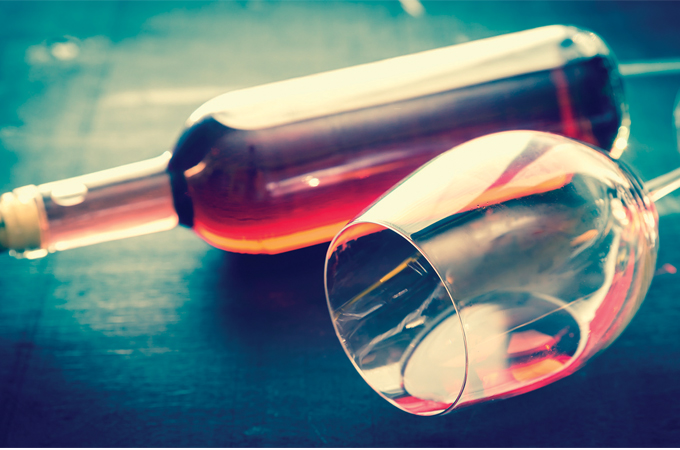The pink stuff is produced in nearly every wine region in the world. Its flavors range from super sweet to bone dry, and its color can be a tint of pale pink, light ruby or even copper-orange (but we’ll save that last one for a later article). The styles of rosé vary, too, depending on region: there are bubbly Champagnes, dry Rhônes and candy-sweet ‘blush’ zinfandels.
So where does the pink come from? In wine production, color is achieved using three different methods, each signaling varying degrees of contact with the grape’s skin: straight skin contact, saignée and blending.
Red wine gets its color from long periods of contact with the grape skins. In the case of rosé, it spends a shorter period on the skins. The deeper the color of a rosé, obviously the longer it spends on the skins. And just as with red wine, the longer the skin contact, the more tannic and rich the wine becomes.
In the saignée method, the juice is bled off partially through the maceration in order to intensify the resulting red wine. The juice that is bled off has had a shorter period of skin contact and that is what is used to produce rosé—we get two wines from one pressing!
In Champagne, the blending method is used to make sparkling rosé. Prior to secondary fermentation, red and white wines are blended together to achieve the color and flavor profile desired. Whether you call it rosato or rosado, blush, or rosé, one thing is certain: spring and summertime are perfect for pink wine.
california
Robert Sinskey ‘Vin Gris’ Barneros 2015: One of my absolute favorite domestic rosés, this is exclusively produced from pinot noir and is bursting with crisp acidity and flavors of blood orange zest and strawberries. $30
france
Roses from the Rhône and Provence tend to be drier. Domaine Du Bagnol Cassis Provence 2015, a blend of grenache, mourvèdre and cinsault, produces rosy strawberry and ruby grapefruit with a bone-dry finish. $23
italy
Cerasuolo d’Abruzzo is a wonderful Italian example produced of 85 percent Montepulciano grapes. The other 15 percent can be any other non-aromatic red wine varietal from the region. ‘Cerasuolo’ translates to ‘cherry’ in Italian and refers to the bright red color and the tart cherry flavor profile. Collefrisio Cerasuolo d’Abruzzo 2015 pairs acidity with currant and sour cherry aromas and flavors. $9.
spain
Muga Rose-Rioga 2015 is a blend of garnacha, viura, and tempranillo, full of fresh cherry, quince and apricot and lovely acidity. $10
Jeffrey Hall is the sommelier for The Four Seasons Hotel-St. Louis.
